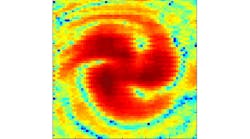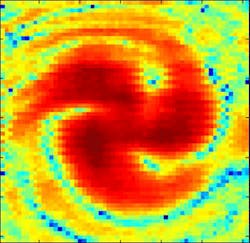Radio beams cope much better with obstacles between the transmitter and receiver than optical systems, which are easily affected by atmospheric turbulence. Scientists at the University of Southern California (USC) recently developed a technique similar to twisting light to send data at high speeds—with radio waves. Led by electrical engineering professor Alan Willner, the research team reached data-transmission rates of 32 Gbits/s across 2.5 m of free space.
To achieve that speed, the team passed each beam, which carried its own independent stream of data, through a “spiral phase plate” that twisted each radio beam into a unique helical shape. A receiver at the other end of the room then untwisted and recovered the data streams. The technology can be used to transmit multiple, spatially collocated radio data streams through a single aperture, ideal for applications such as ultra-high-speed links for wireless backhaul.
At 32 Gbits/s, it’s possible to transmit more than 10 hour-and-a-half long HD movies in one second. In fact, that rate is about 30 times faster than LTE wireless. Previously, Willner led a team that used twisted light beams to transmit data at 2.56 Tbits/s. The team published its findings in an article for Nature Communications, and will focus future research on attempting to extend the transmission’s range and capabilities.

